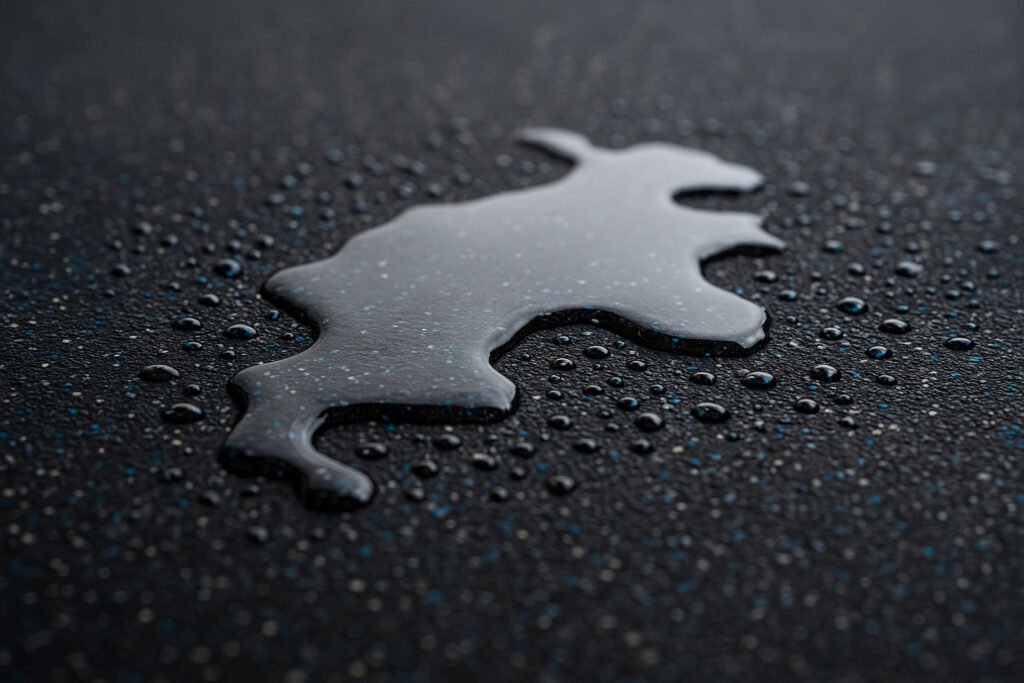Does Rubber Floor Get Slippery When Wet?
A wet floor can turn any space into a safety hazard—but what about rubber flooring?
Rubber flooring is generally more slip-resistant than wood, tile, or vinyl, even when wet, but surface texture, water amount, and maintenance determine how safe it stays.

Rubber is known for its naturally high friction, but that doesn’t mean every rubber floor performs the same in wet conditions. Whether it’s in a gym locker room, an outdoor playground, or around a swimming pool, the safety of your floor depends on material, texture, and upkeep. Here’s what you need to know.
How Rubber Flooring Provides Slip Resistance
Rubber’s safety reputation comes from its high coefficient of friction and ability to grip underfoot. The surface can be smooth or textured, and in many Lanhefloor products, we use fine granules or EPDM top layers to increase traction.
Key points:
- Surface texture improves grip in wet environments.
- Granule size affects foot contact and slip resistance.
- Certifications like EN 14041 and EN 1177 include slip-resistance testing.
See our Composite Gym Rubber Tile for an example of a textured, slip-resistant surface.
Does It Get Slippery When Wet?
Compared to ceramic tile or polished concrete, rubber flooring maintains better grip when wet. However, there are factors that can reduce safety:
- Surface texture – Smooth surfaces are more slippery than granulated or patterned ones.
- Water level – A thin film of water still allows traction, but standing water can reduce grip.
- Contaminants – Dirt, dust, or oil mixed with water can create dangerously slippery spots.
- Environment – Outdoor installations may accumulate algae or moss, affecting slip resistance.
📩 Request a free slip-resistant flooring quote for your wet-area project.
Key Factors Affecting Wet Slip Resistance
| Factor | Impact | Solution |
|---|---|---|
| Surface texture | Smooth surfaces can be more slippery | Choose textured or fine-granule finish |
| Water amount | Large puddles reduce friction | Ensure proper drainage |
| Contaminants | Oil/dirt + water create slick surfaces | Regular cleaning |
| Material type | Pure SBR vs EPDM top affects grip | Select high-friction EPDM |
For outdoor projects, our Outdoor Rubber Floor range offers UV and weather resistance with textured surfaces for better wet traction.
How to Improve Safety When Wet
- Choose R10 or R11 slip-rated rubber flooring for high-moisture areas.
- Install proper drainage to prevent puddling.
- Clean regularly to remove dirt or oily residues.
- Use EPDM fine granules for pool decks and splash zones.
- For gyms, select rubber tiles with a matte, granulated finish.
See examples in our Gym Rubber Roll collection for large areas.
Application Scenarios
- Gyms & Locker Rooms – Sweat and water near showers make slip resistance crucial.
- Outdoor Playgrounds – Rain or dew can create hazards without textured surfaces.
- Swimming Pools – Constant wetness demands high-traction EPDM.
- Functional Training Zones – Protect athletes during dynamic movement.
Conclusion
Rubber flooring remains one of the safest options for wet environments, but design, installation, and maintenance will determine how well it performs. Always choose the right texture, install proper drainage, and keep the floor clean to maximize safety.
📩 Contact us now for expert advice and a free sample—we supply certified slip-resistant rubber flooring worldwide.
Related Blog Posts
- What Are the Benefits of Wet Pour Rubber?
- Outdoor Rubber Flooring – Complete Buyer’s Guide
- EPDM vs. SBR Rubber Flooring: Which is Better?
—
